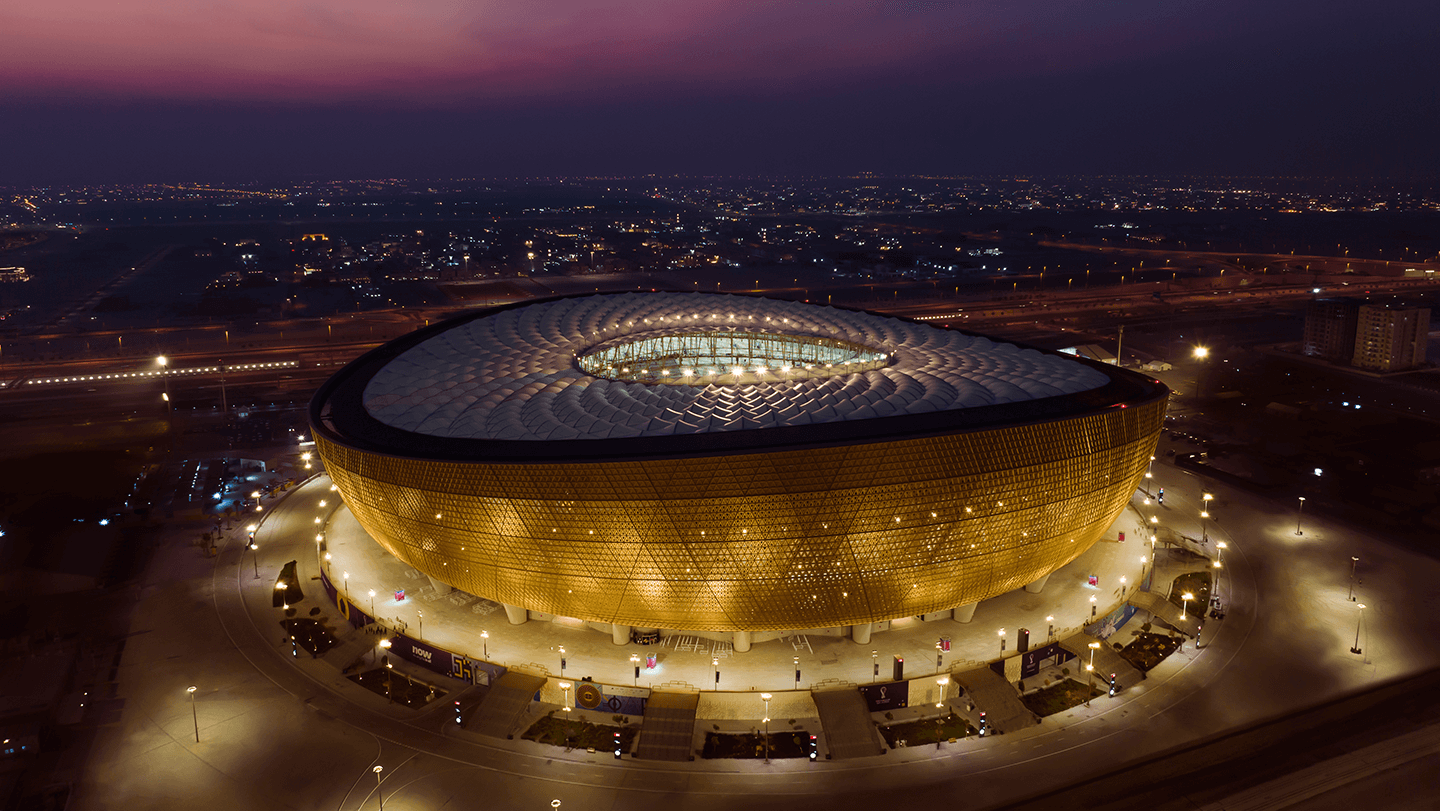
The State of Qatar’s decision to bid for the FIFA World Cup 2022™ was driven by its leaders’ ambition, starting with an idea and a dream.
In March 2009, Sheikh Mohammed bin Hamad bin Khalifa Al Thani, the Chairman of the Qatar 2022 Bid Committee, submitted Qatar’s final bid to Joseph S. Blatter, the President of FIFA at the time.
In addition to the State of Qatar, other well-established sporting countries submitted the bid, either jointly, such as Spain-Portugal and Belgium-Netherlands or individually, such as England, Russia, the United States, Mexico, Australia, Japan, Indonesia, South Korea and China.
On Thursday, 2 December 2010, people across Qatar awaited in anticipation as the vote for the tournament host was about to be announced at the FIFA headquarters in Zurich, Switzerland.
After a strong competition between Qatar and the United States’ respective bids, it was finally announced that Qatar won the right to host the FIFA World Cup.
The distinguished Qatari bid book was characterised by its diversity and uniqueness. Among the distinctive aspects of the bid was the commitment that Qatar made to donate 170,000 stadium seats to developing countries at the end of the tournament.
After the announcement, several days of celebration ensued across the State of Qatar, and the journey to transform the World Cup’s vision was turned into reality.
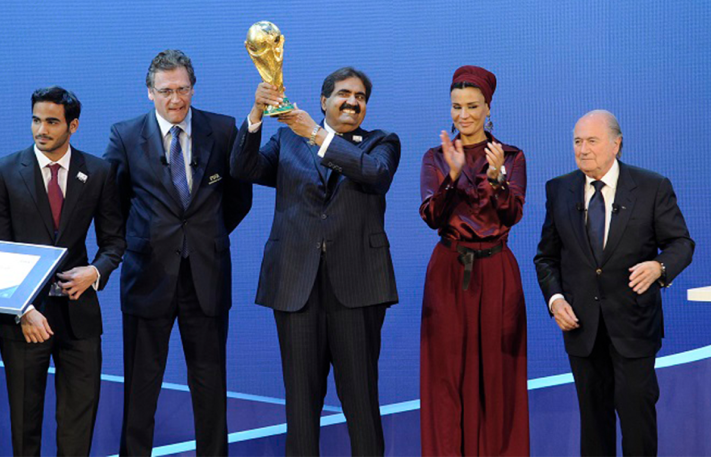
The State of Qatar’s vision of hosting the FIFA World Cup is now a reality, thanks to Amiri Decree No. 27, which established the Supreme Committee for Delivery & Legacy in April 2011 as an independent entity whose budget is incorporated into the State’s General Budget.
Headquartered in Doha, the Supreme Committee oversaw delivering the first FIFA World Cup in the Arab World. At the top of the agenda was to set an overarching strategy for delivery and subsequently implementing policies to support it. These included legal, organisational, social, economic and architectural policies which would ensure the success of the tournament.
In addition to the delivery of the tournament itself, the Amiri decree enabled the Supreme Committee to define the frameworks for all further events and activities which would enhance the FIFA World Cup experience.
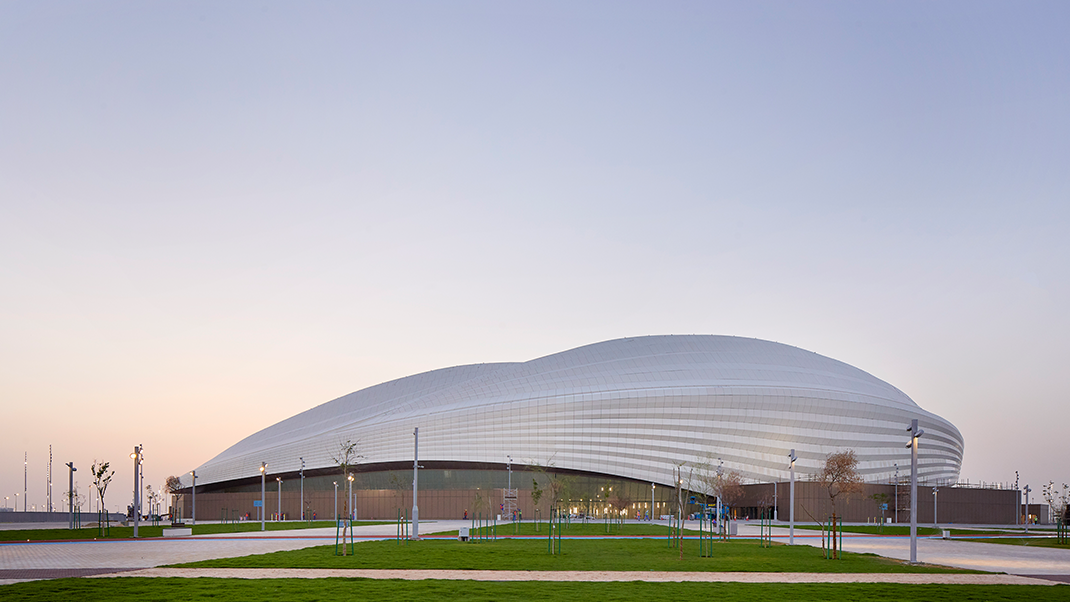
In November 2013, the Supreme Committee revealed the concept design of the Al Janoub Stadium.
It was the first of the tournament’s stadiums to be revealed. The stadium’s innovative design – developed by Aecom in association with the late architect Zaha Hadid – embodies Qatari soil, while its shape is inspired by the traditional sailing boats (Dhows).
The construction of the stadium began in 2014.
“Al Wakrah’s tradition is reflected in the stadium design, which captures the essence of the city’s history and traditional landmarks.” – Zaha Hadid

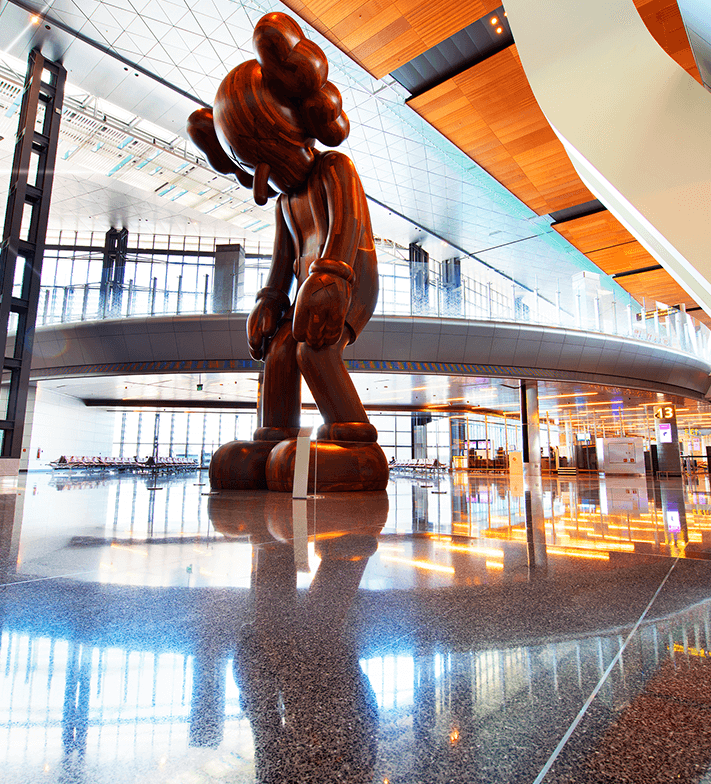
May 2014 saw one of the biggest early milestones in FIFA World Cup Qatar 2022™ Journey – the opening of Hamad International Airport.
With international flights commencing and an expected 70 million passengers annually, the question of transport and travel for the tournament had been answered. Undoubtedly, this strategic project was considered one of the most important ones delivered in preparation for the FIFA World Cup Qatar 2022™.
Despite being a new airport, it has won several international awards, the latest of which was the 2022 Skytrax World’s Best Airport Award, which it also won in 2021.
The Supreme Committee for Delivery & Legacy launched its first introductory tour activities for community outreach, as part of the preparations for hosting the FIFA World Cup Qatar 2022™.
This introductory tour was an opportunity to introduce the tournament and the sustainable legacy it will leave behind for the State of Qatar and the wider region. The tour has also been instrumental in introducing the local community to the various volunteer opportunities organised by the Supreme Committee for Delivery & Legacy, encouraging the local community to be an active partner in the preparation and organisation process of the FIFA World Cup Qatar 2022™.
As part of its campaign to promote the FIFA World Cup Qatar 2022™, His Excellency Sheikh Joaan bin Hamad Al Thani, President of the Qatar Olympic Committee (QOC), inaugurated the ‘Bayt Qatar’ Booth during an official ceremony at the Rio Olympics in Brazil in 2016.
During the Olympic Games in Rio, several events were organised by the Supreme Committee for Delivery & Legacy at the ‘Bayt Qatar’ Booth, which was visited by the Brazilian public in large numbers to learn about Qatar’s preparations for the much-anticipated FIFA World Cup Qatar 2022™.
The Supreme Committee’s ‘Bayt Qatar’ Booth included models of the FIFA World Cup Qatar 2022™ stadiums, including the Ahmed Bin Ali Stadium, in addition to several other events that showcased and highlighted the preparations taking place across the State of Qatar to host this global event.
Once the event had ended, the site where the ‘Bayt Qatar’ Booth stood was transformed into a bilingual public school called Escola Eleva, with the goal of leaving a lasting positive impact for the State of Qatar in Rio de Janeiro.
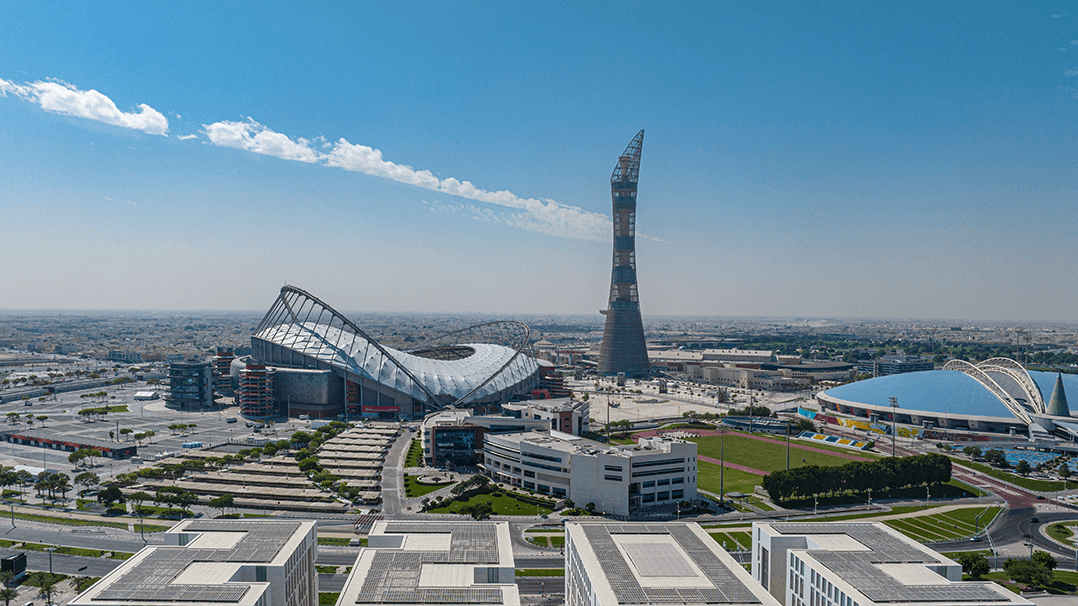
His Highness Sheikh Tamim bin Hamad Al Thani, the Amir of the State of Qatar, inaugurated the Khalifa International Stadium on 19 May 2017. Some 12,000 seats were added to the renovated stadium, bringing the total number of seats to 40,000.
The Khalifa International Stadium was the first stadium to be declared as ready for the FIFA World Cup Qatar 2022™.
The Khalifa International Stadium dates back to 1976, holding a special place in the hearts of Qataris for the memories associated with it, as the stadium hosted many local and regional football competitions over the years.
On 26 November 2017 the Supreme Committee for Delivery & Legacy unveiled the design of the Stadium 974, the seventh venue for the FIFA World Cup Qatar 2022™.
The stadium is distinguished by its innovative and bold design. Built using shipping containers and detachable materials – including the walls, ceiling, and seats – the stadium brings together a modern design with a distinctive view.

The Supreme Committee for Delivery & Legacy revealed the design of the Lusail Stadium on 15 December 2018. The Lusail Stadium is of particular importance as it was selected to host the final match of the FIFA World Cup Qatar 2022™. The date of the final match – 18th December – was chosen to align with Qatar’s National Day, allowing all to celebrate both occasions.
The stadium can accommodate about 80,000 spectators, making it the largest stadium at the FIFA World Cup Qatar 2022™.
Its unique design seeks to blend the State of Qatar’s rich history with its bright and prosperous future.
16 May 2019 was an exceptional day in the history of the FIFA World Cup Qatar 2022™, as His Highness Sheikh Tamim bin Hamad Al Thani, the Amir of the State of Qatar, inaugurated the Al Janoub Stadium.
The Al Janoub Stadium was the first stadium to be fully constructed for the FIFA World Cup Qatar 2022™.
The Organizing Committee of the FIFA World Cup Qatar 2022™ revealed the tournaments’ official emblem on 3 September 2019. To launch the emblem, large screens were placed across the State of Qatar’s iconic buildings. Other Arab and non-Arab countries also participated by displaying the emblem at the same time including Russia, Kuwait, Oman, Lebanon, Jordan, Tunisia, Algeria, Morocco, Iraq, Palestine, Libya, and Sudan.
The emblem design reflects the tournament’s power to unite people and cultures from all across the world. The emblem design also includes several elements inspired by the Qatari and Arab culture.
The design is inspired by the woollen shawl that is popular across the Arab world, and is adorned with inscriptions, taking the form of the number eight in reference to the tournament’s eight stadiums.
The emblem also draws inspiration from different cultures across Asia as a means of celebrating the second occasion that Asia has hosted the FIFA World Cup.

On 15 June 2020, the Supreme Committee for Delivery & Legacy announced the readiness of Education City Stadium. The stadium is located within the distinguished academic area known as Education City.

The Education City Stadium has been nicknamed the “Diamond in the Desert” based on its unique design and intertwined geometric shapes, which change colour with the sun’s movement across the sky.

On 18 December 2020, the National Day of the State of Qatar, His Highness Sheikh Tamim bin Hamad Al Thani, the Amir of the State of Qatar, inaugurated the Ahmed Bin Ali Stadium. The stadium hosted the 2020 Amir Cup final between Al Sadd and Al Arabi.
Ahmed Bin Ali Stadium was the fourth stadium to be declared ready for the FIFA World Cup Qatar 2022™, following the Al Janoub Stadium, Khalifa International Stadium, and the Education City Stadium.
On 22 October 2021, the Al Thumama Stadium was inaugurated. Its design was inspired by the gahfiya, a head garment worn by people in the State of Qatar and across the Arabian Gulf region.
On its opening day, the stadium hosted the Amir Cup final between Al Sadd and Al Rayyan.
Al Thumama Stadium is located 12 km south of downtown Doha and is close to Hamad International Airport. The stadium’s design, which blends together the past and the present, celebrates decades of rich Arab culture passed from generation to generation in Qatar and across the region.
Designed by Qatari architect Ibrahim Jaidah, the stadium won the prestigious MIPIM Architectural Review Future Projects Awards in May 2018.
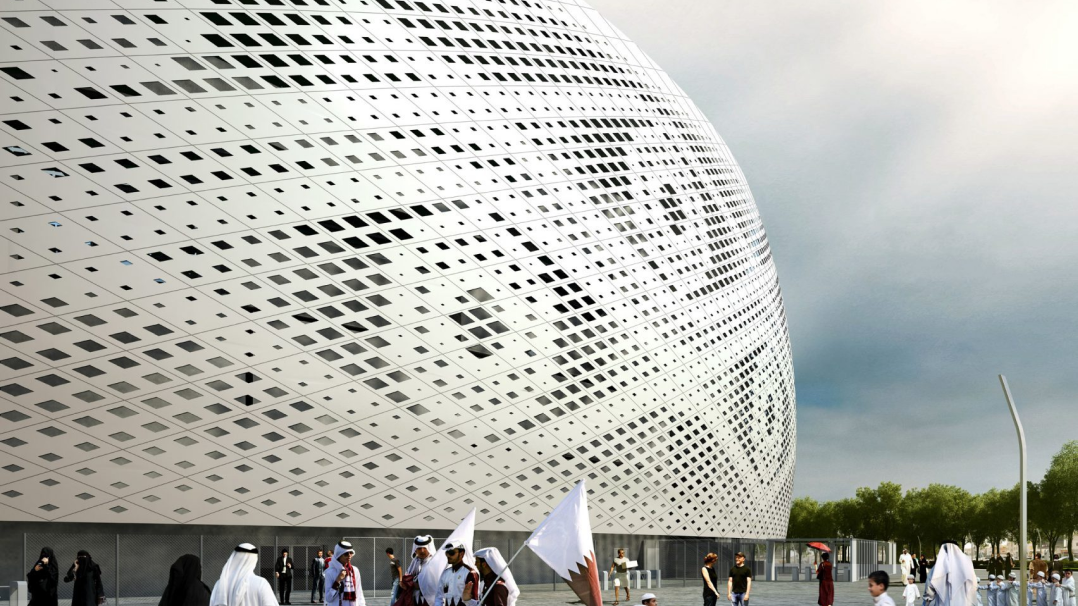
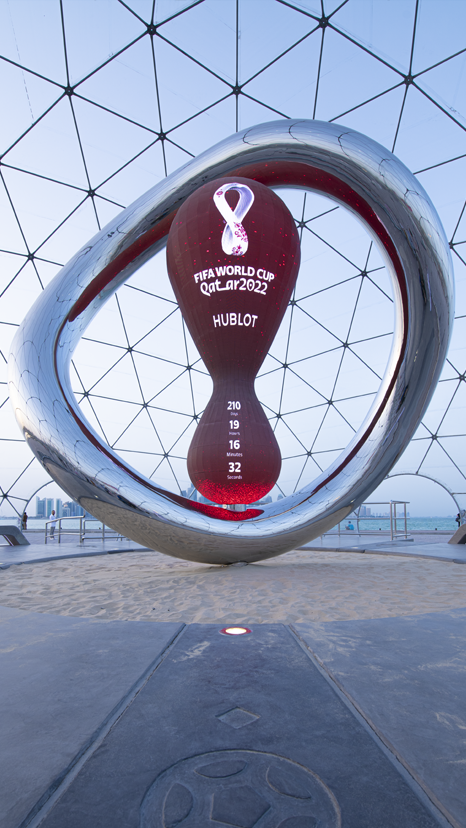
On 21 November 2021, in preparation for the FIFA World Cup Qatar 2022™, the official countdown clock was unveiled in a ceremony held at the Doha Corniche, marking one-year to go until the beginning of the tournament.
The design of the Hublot Clock was inspired by the curves of the World Cup logo and the shape of the ancient hourglass as a means of underlining the interconnected nature of the FIFA World Cup Qatar 2022™.
The clock was designed to be seen from all angles against the backdrop of Doha’s skyline.
Above all, the clock is intended to signify the anticipation of fans across the world- and their growing excitement a year ahead of the FIFA World Cup tournament, counting down to the kick-off of the tournament’s opening match at the Al Bayt Stadium on 20 November 2022.
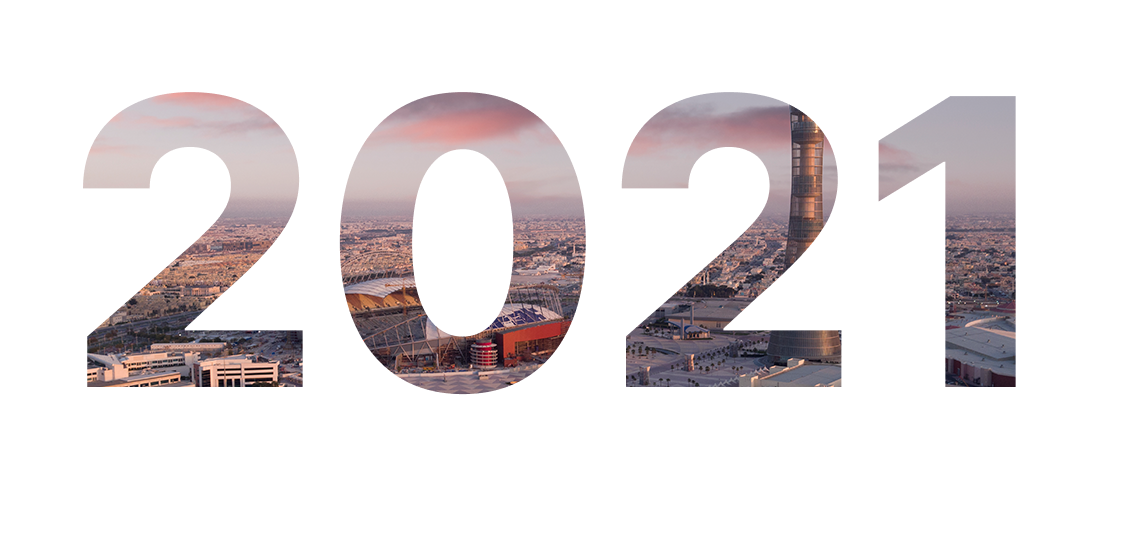
The State of Qatar hosted the FIFA Arab Cup Qatar 2021™ which took place between 30 November – 18 December 2021. The tenth edition of the tournament was under the auspices of FIFA and proved a successful simulation of the forthcoming FIFA World Cup Qatar 2022™.
The tournament saw the participation of 16 Arab national teams and matches were held at several FIFA World Cup stadiums.
Two new stadiums were inaugurated during the FIFA Arab Cup Qatar 2021™: the Al Bayt Stadium, which seats 60,000 fans, and Stadium 974, which seats 40,000 fans.
The Arab Cup was the perfect opportunity to set the stage for the FIFA World Cup Qatar 2022™.
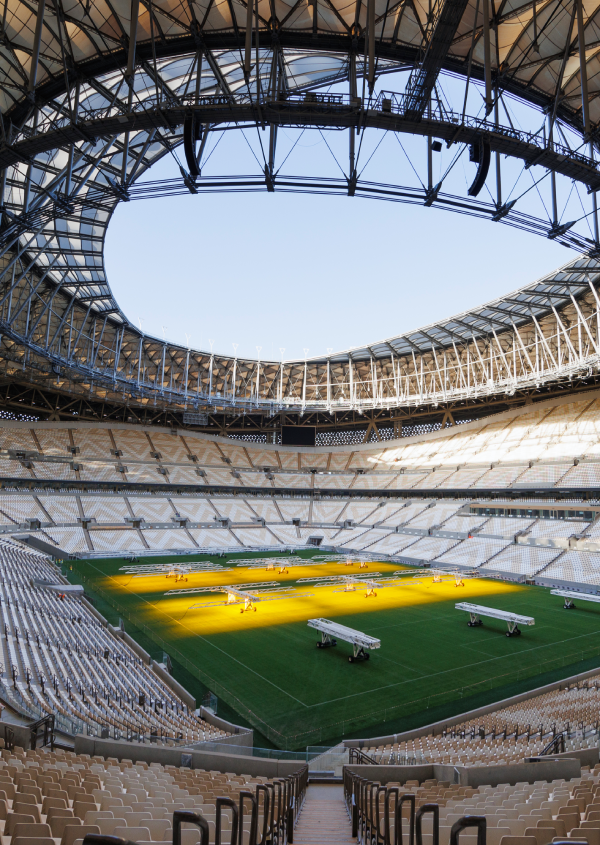
On 9 September 2022, Lusail Stadium hosted the Lusail Super Cup. It is the largest stadium of the FIFA World Cup Qatar 2022™.
The stadium – which has a capacity of 80,000 seats – will host the FIFA World Cup final on 18 December.
The Lusail Super Cup included a match between Saudi League Champions Al Hilal and Egyptian Premier League champions Zamaley, which featured a crowd of more than 78,000 spectators and was designed to ensure preparedness ahead of the FIFA World Cup tournament.
